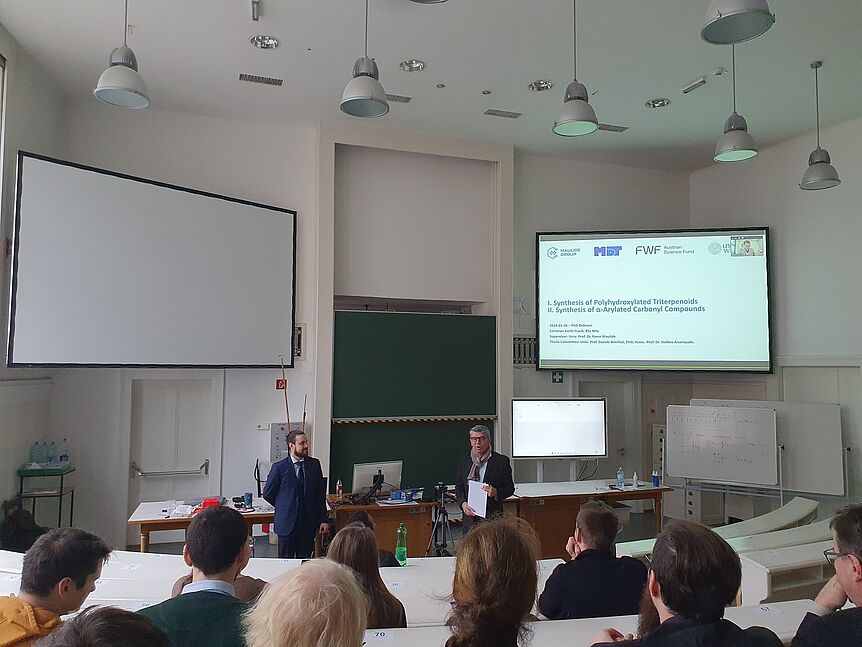The Doctoral Program ION CHANNELS AND TRANSPORTERS AS MOLECULAR DRUG TARGETS („MolTag“)
and the Pharma &Food Lecture Series (580006 SE) are pleased to invite you to the following lecture
"Identification of the long-sought GHB high-affinity binding site in the mammalian brain"
by Prof. Petrine WELLENDORPH, PhD
Department of Drug Design and Pharmacology, University of Copenhagen/DK
on: Thursday, March 17, 2022, 05:15pm (17:15)
at: UZA 2, Althanstr. 14, 1090 Vienna,
Lecture Hall 5 (HS 5)
ABSTRACT: g-Hydroxybutyric acid (GHB) is a metabolite of g-aminobutyric acid (GABA), the main inhibitory neurotransmitter in the central nervous system (CNS). Besides being a natural substance, GHB possesses many pharmacological roles. It is a used clinically for the treatment of narcolepsy (XyremR) and alcoholism (AlcoverR), and as a recreational drug of abuse (a.k.a. Fantasy). In the brain, GHB binds with high affinity to an expressionally abundant class of proteins in the forebrain. These binding sites and their function have remained elusive since 1982. Using an unbiased chemical proteomics approach, we have recently identified the long-sought-after binding protein for GHB to be the Ca2+/calmodulin-responsive kinase II alpha (CaMKIIa) (Leurs et al., PNAS 118(31):e2108079118, 2021). CaMKIIa is one of the most abundant proteins in the brain with crucial functions in neuronal signalling and an important role in synaptic plasticity and learning. Furthermore CaMKIIa is pathophysiologically involved in cerebral ischemia, yet no CaMKIIa drugs are on the market.
In this lecture, I will present the target identification and validation of CaMKIIa with a range of structural, molecular and cellular evidence. I will further present that GHB analogues are neuroprotective in vitro and in mouse models of stroke, and try to correlate these findings with the novel binding site to the CaMKIIa hub domain. The data have several implications: It solves the mystery of the ‘elusive GHB receptor’ and signifies a paradigm shift in our understanding of CaMKIIa functional regulation via the hub domain. Finally, it demonstrates the innovational potential of GHB analogues in neurological conditions such as cerebral ischemia. The lecture will be relevant to a broad audience interested in molecular neuropharmacology.
Contact: Doctoral Program MolTag, Dept. of Pharmaceutical Sciences; http://moltag.univie.ac.at/, Office.moltag@univie.ac.at, phone: 01 4277 55320




